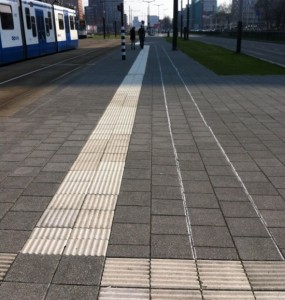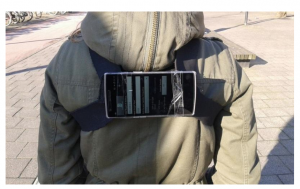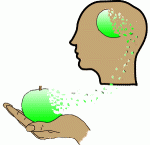Tactile walkways
While walking we often do not look where we are going, but at street signs or a mobile device. This can influence walking behaviour in terms of, for instance, walking direction, walking speed or gait stability. In this case tactile information might be used as a partial subsitute for vision to positively influence walking behaviour. In collaboration with VU colleague Sjoerd Bruijn and several enthousiastic undergraduate students I am investigating the effects of tactile information from the ground on walking behaviour. Recently, NWO highlighted this research project on their website.
Tactile pavement for guiding walking direction: an assessment of heading direction and gait stability
 In this project we investigated whether tactile information from the ground surface can be used to intuitively guide heading direction. We found that indeed commonly installed tactile pavement helps to maintain a stable heading direction. However, it comes at the cost of decreasing gait stability.
In this project we investigated whether tactile information from the ground surface can be used to intuitively guide heading direction. We found that indeed commonly installed tactile pavement helps to maintain a stable heading direction. However, it comes at the cost of decreasing gait stability.
This study was presented at the Society for Neuroscience meeting 2014, ISPGR 2015 and the 2015 MOVE day (poster).
Pluijter N., de Wit, L.P.W, Bruijn S.M.B & Plaisier M.A, Tactile pavement for guiding walking direction: an assessment heading direction and gait stability, in press, Gait & Posture.
Texting while walking on tactile pavement
 Texting while walking can lead to dangerous situations. In this project we investigate how tactile information from the ground influences walking behaviour while texting. We monitor walking behaviour using the gyroscope and accelerometers in a mobile phone that we attach to the upper back of the participant.
Texting while walking can lead to dangerous situations. In this project we investigate how tactile information from the ground influences walking behaviour while texting. We monitor walking behaviour using the gyroscope and accelerometers in a mobile phone that we attach to the upper back of the participant.

